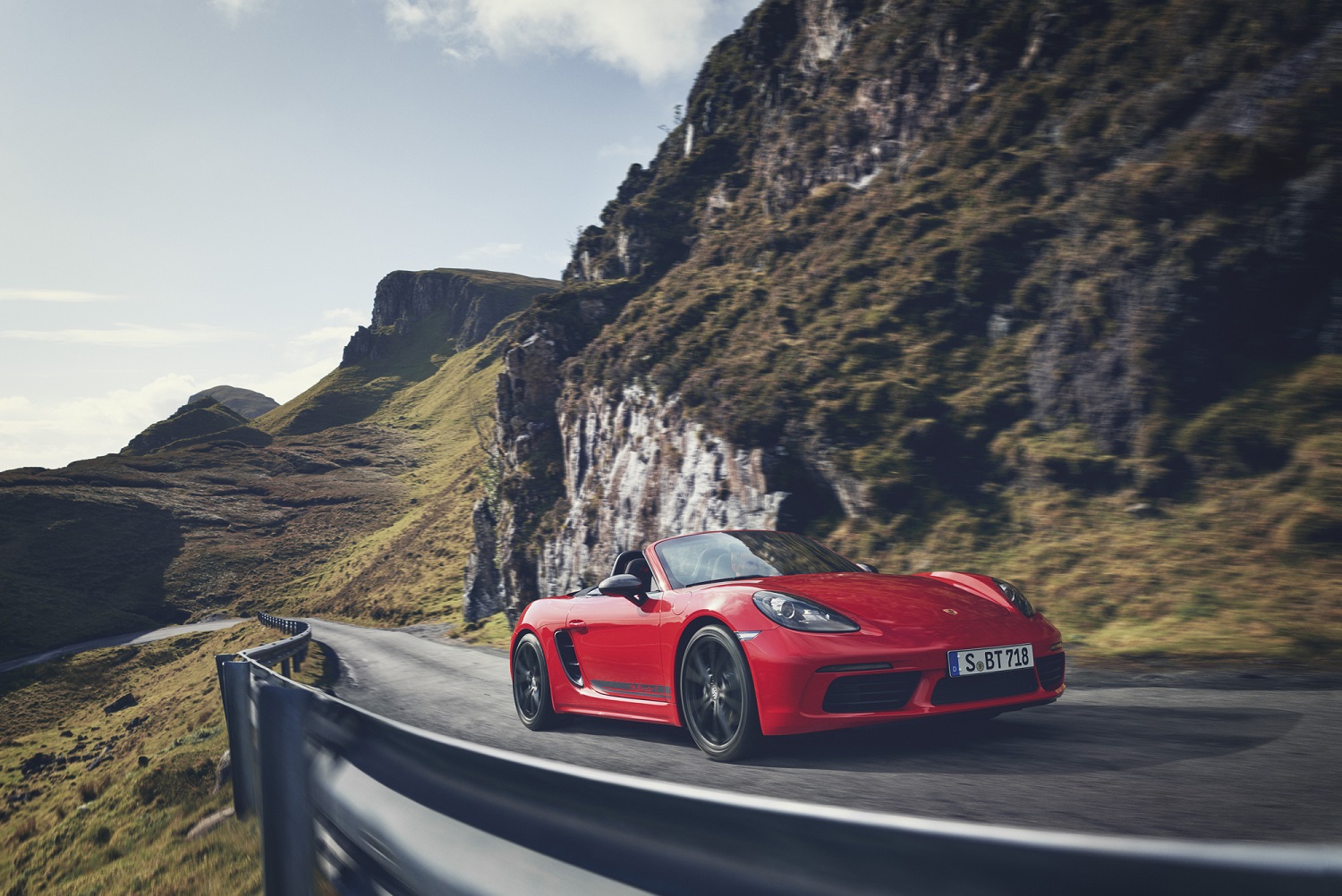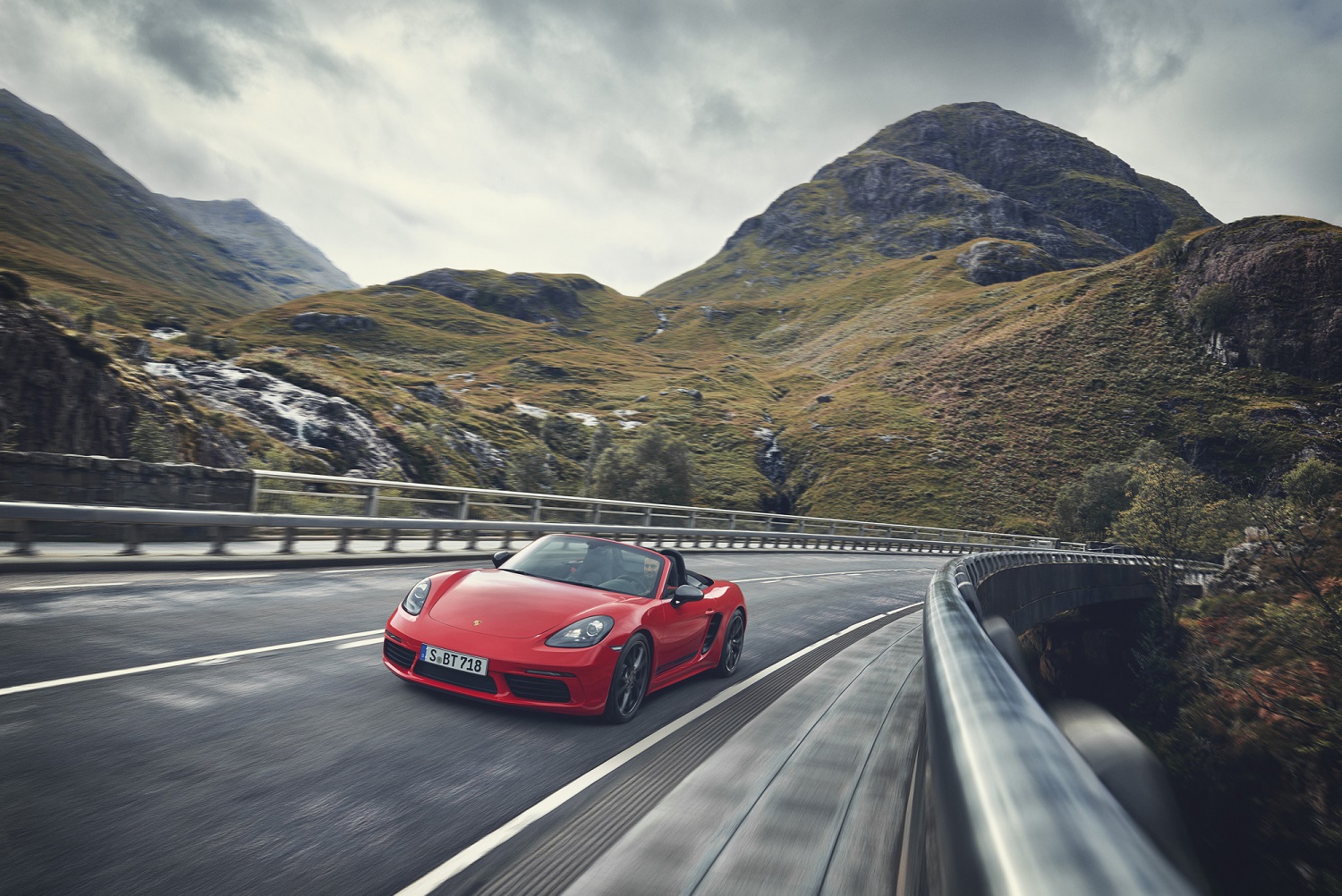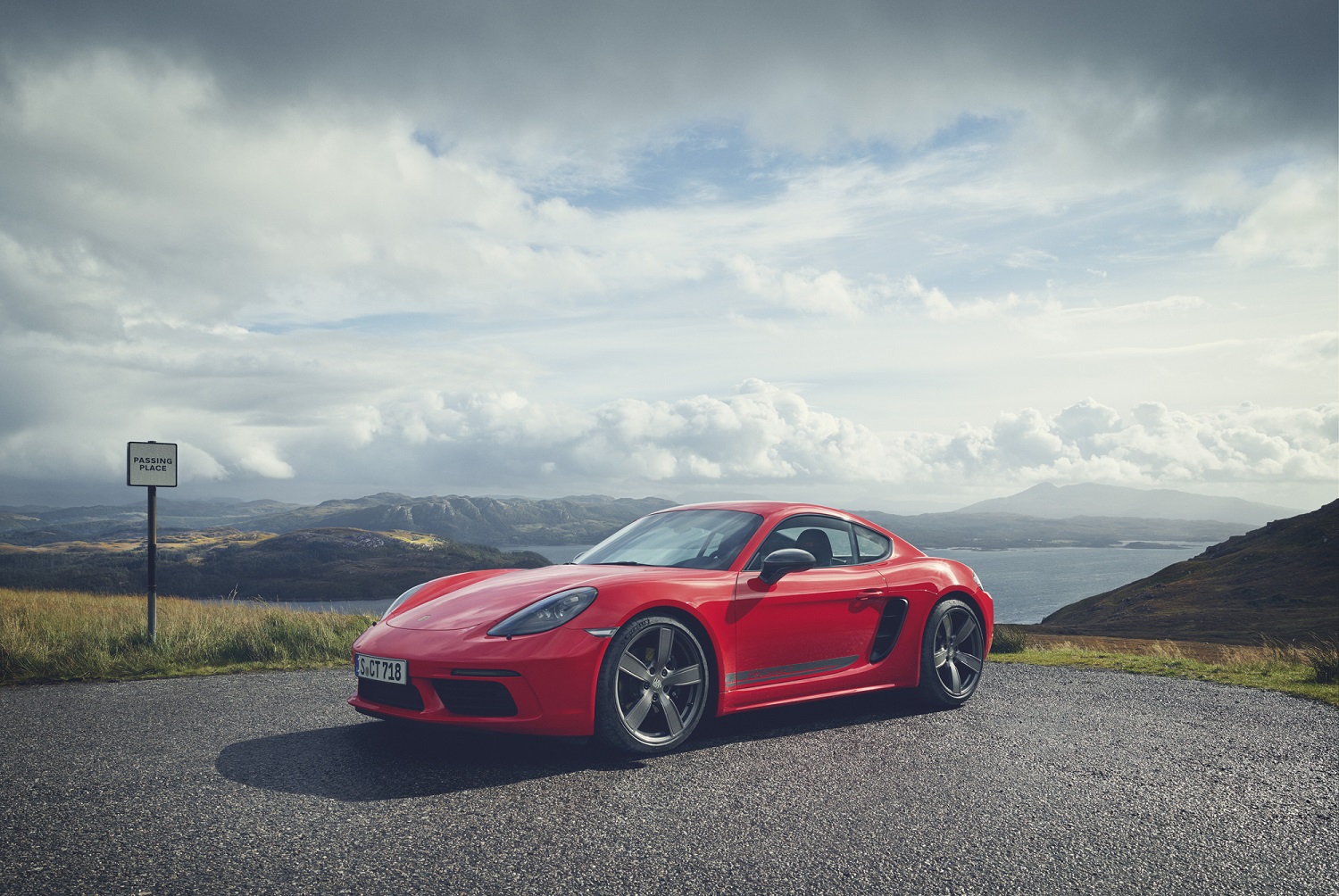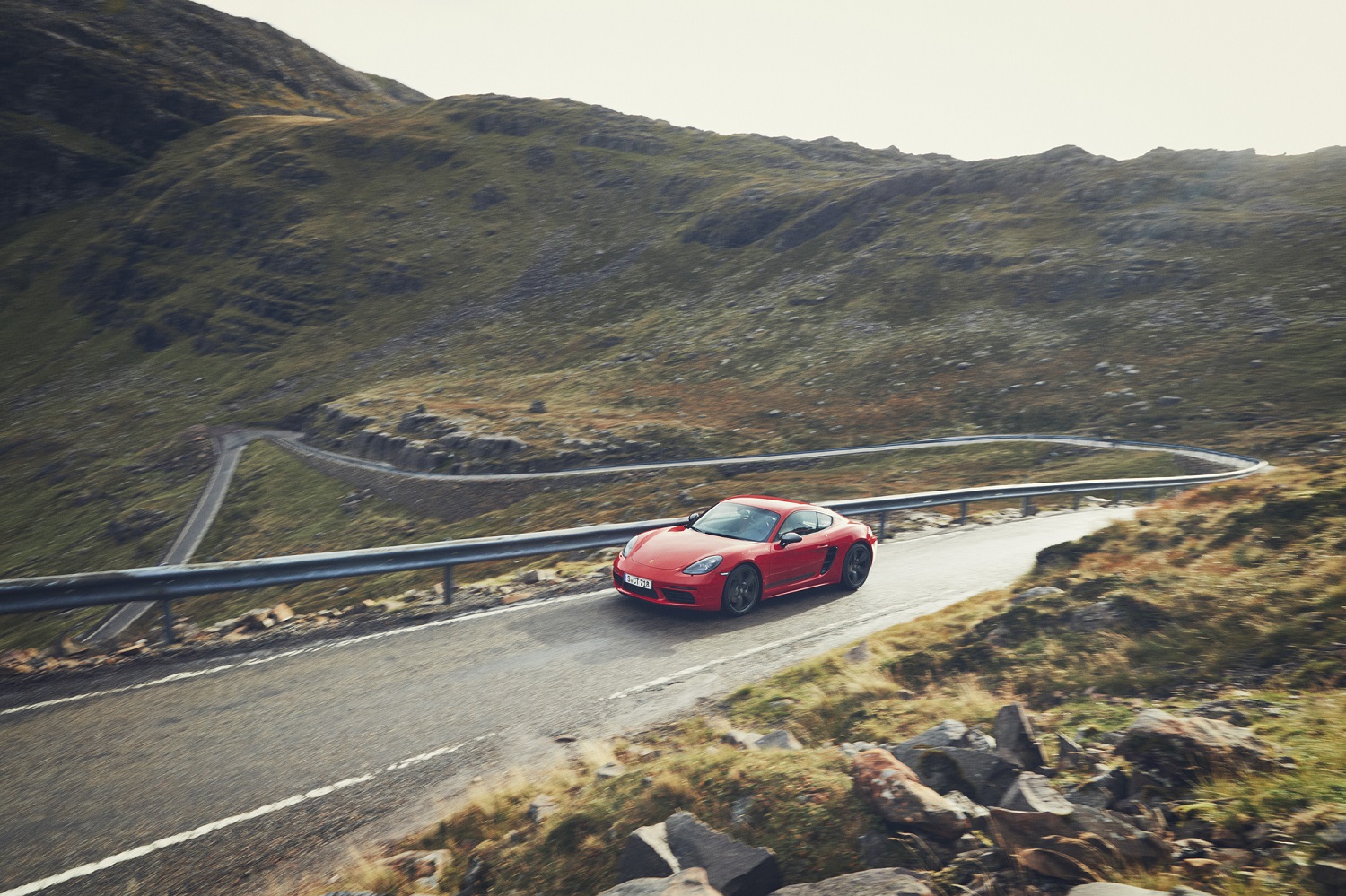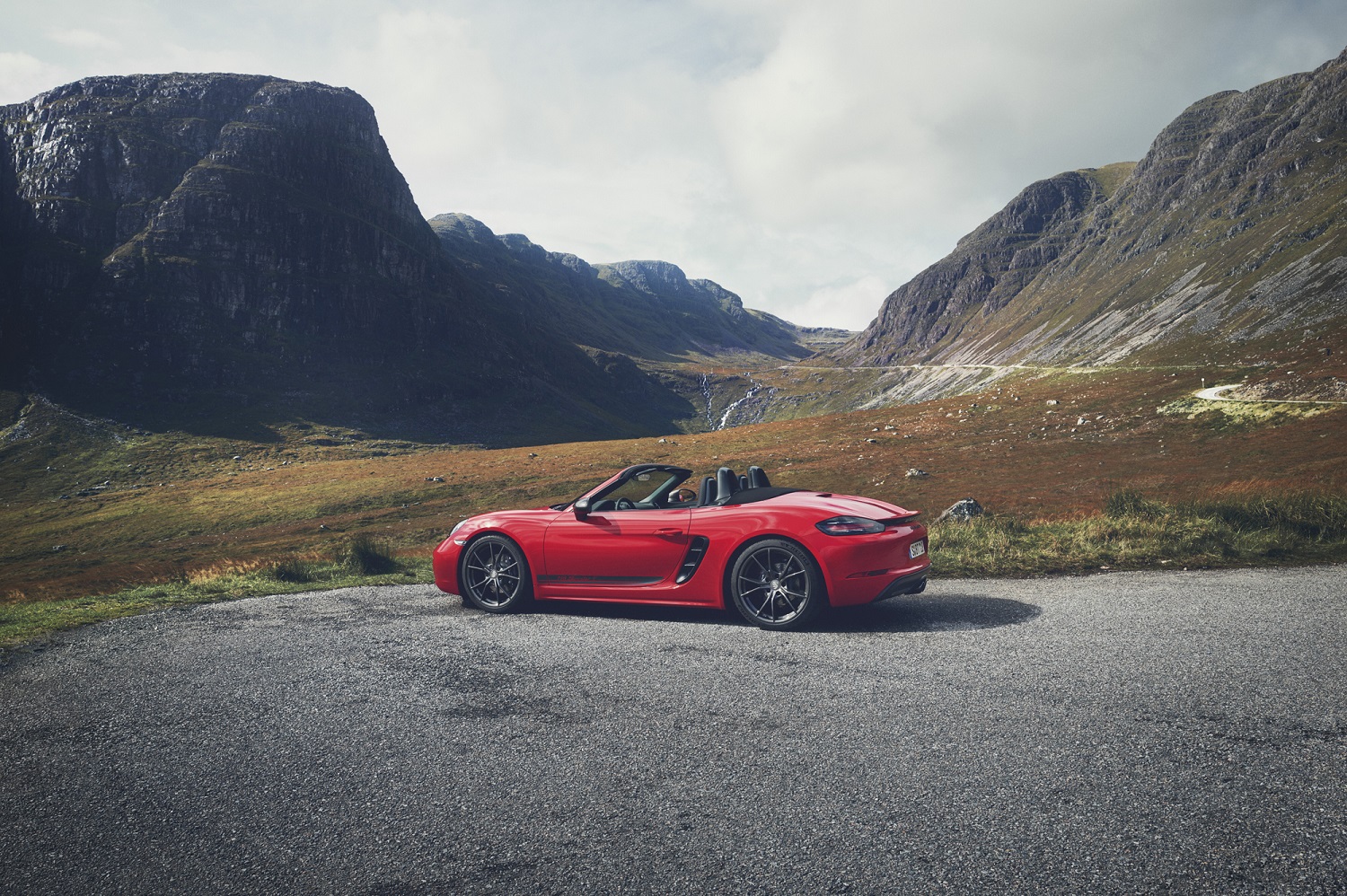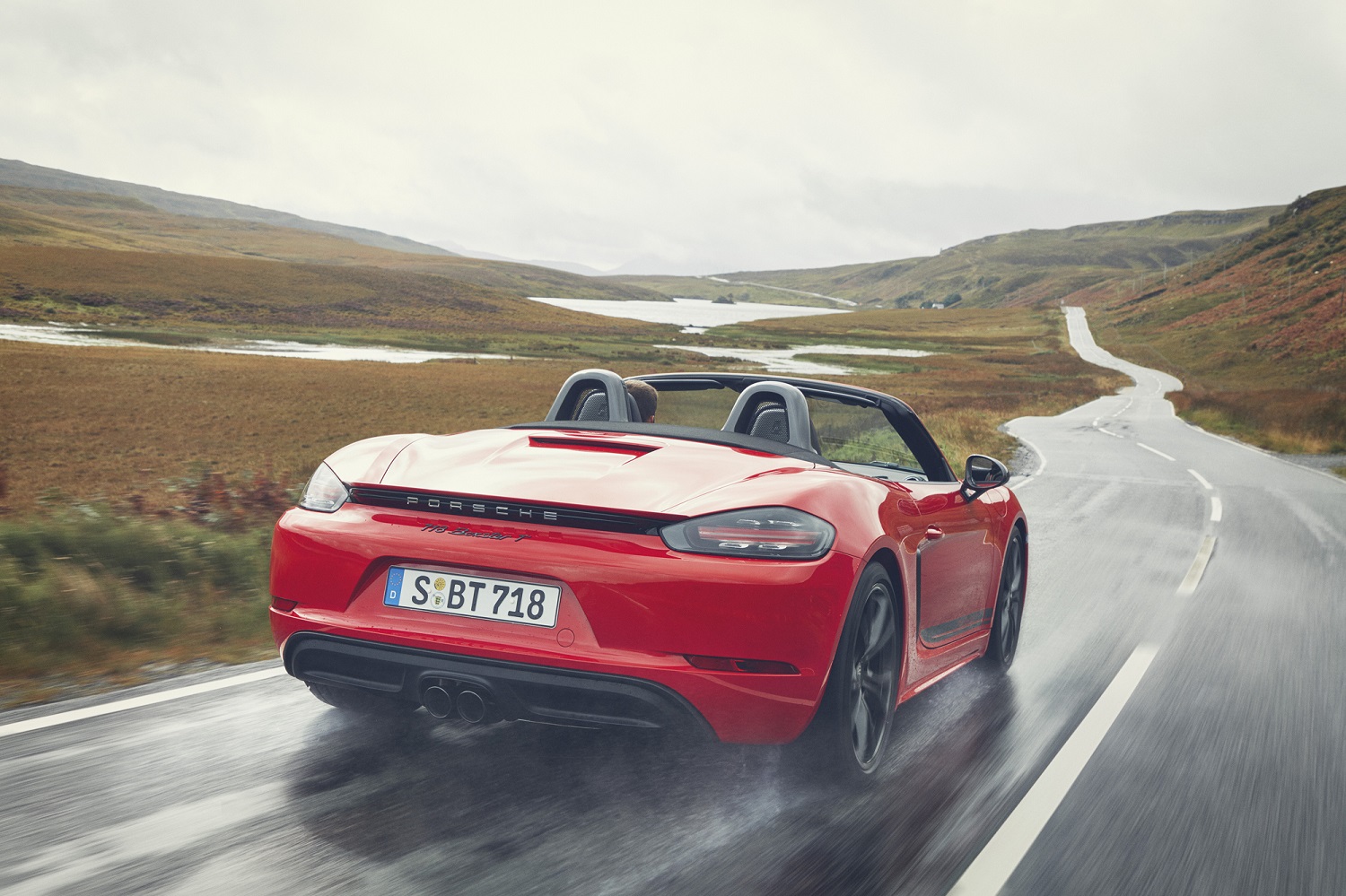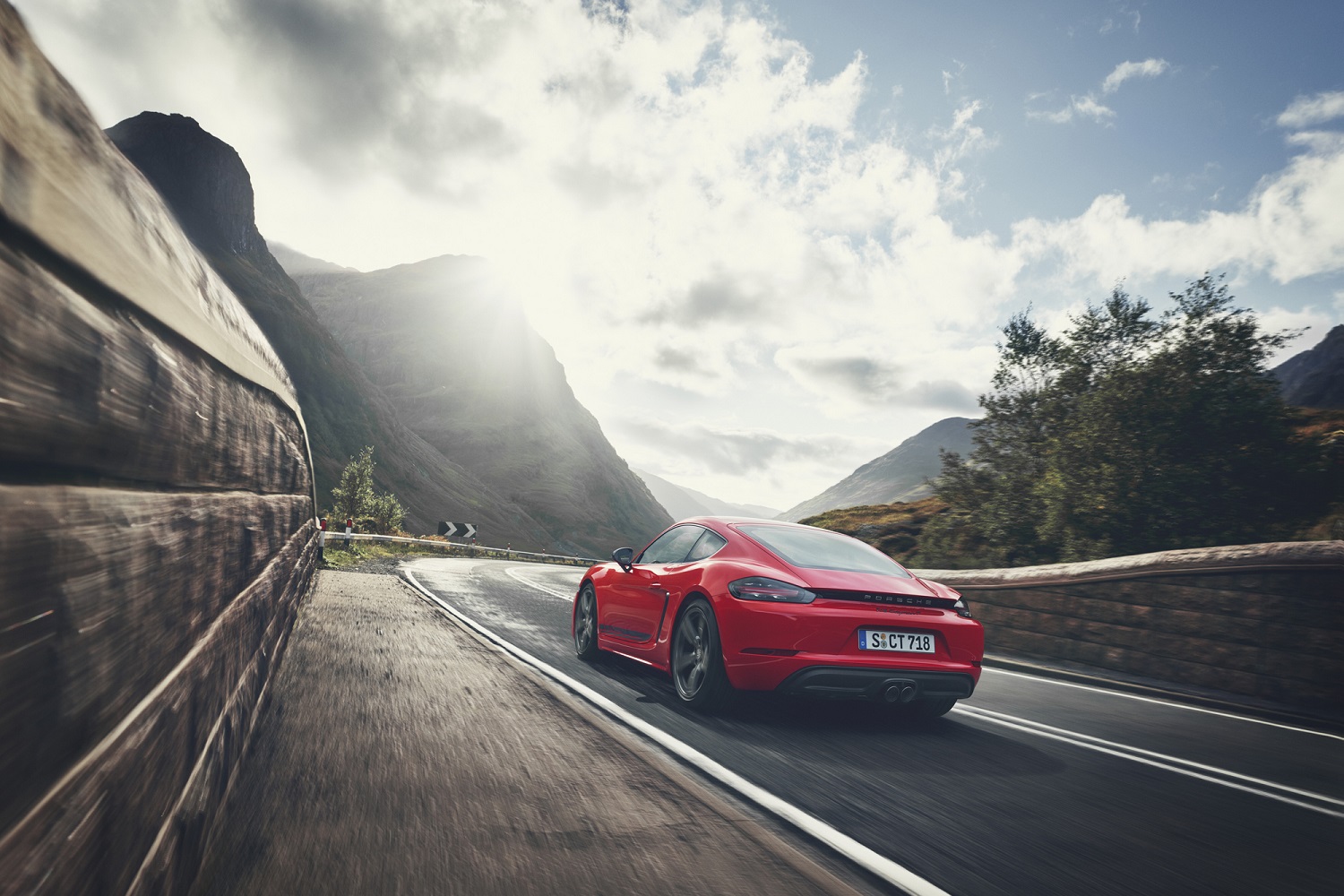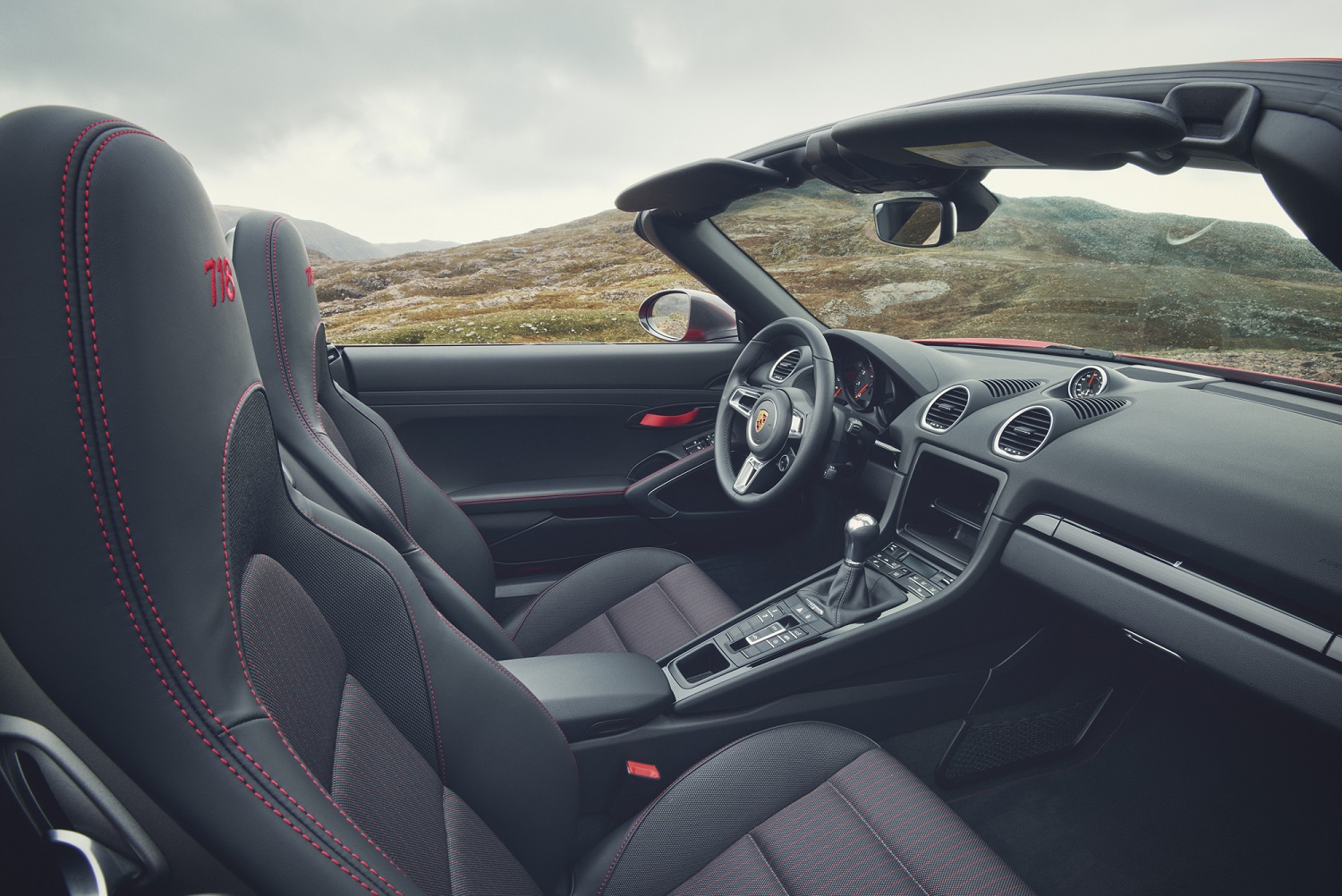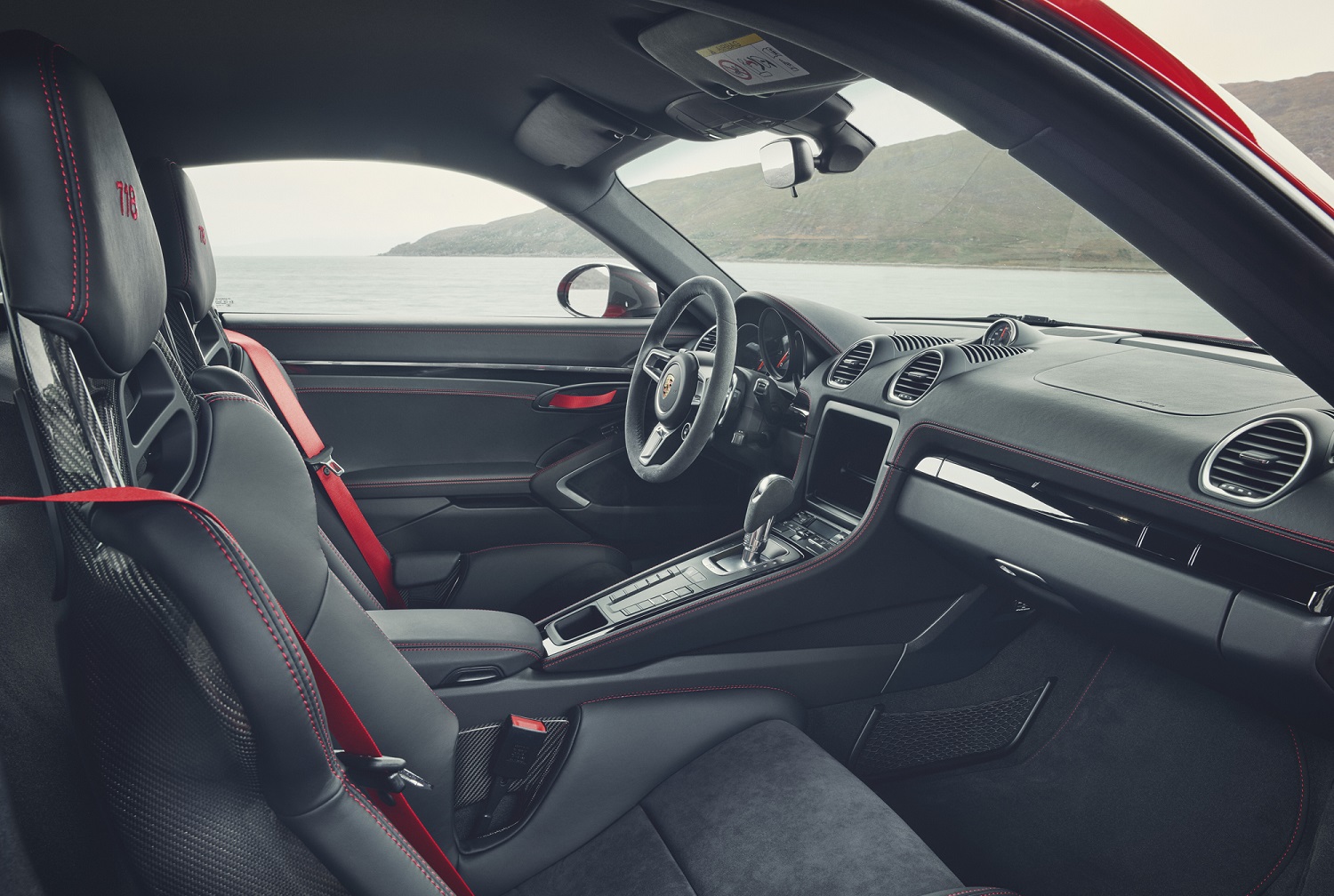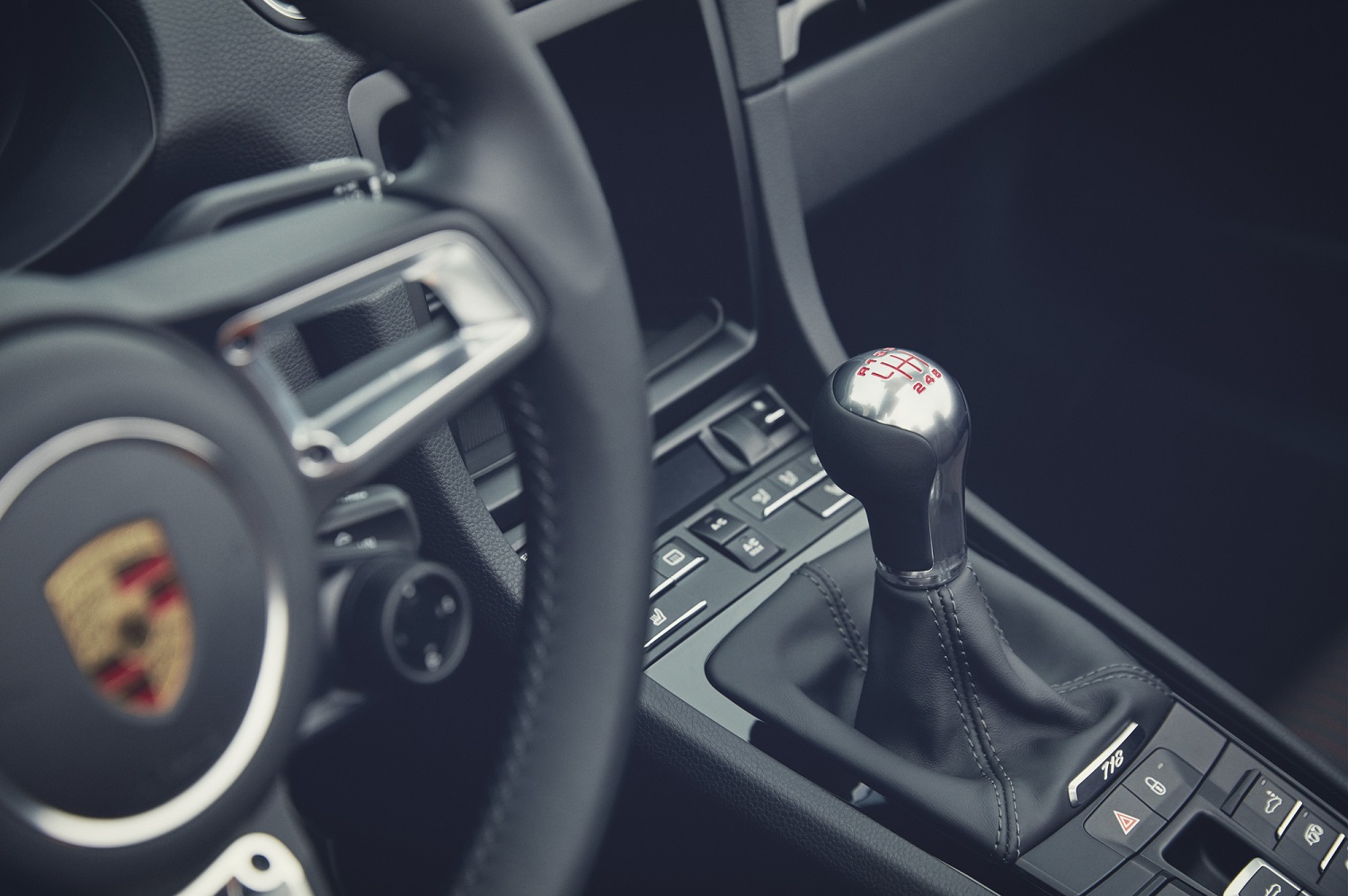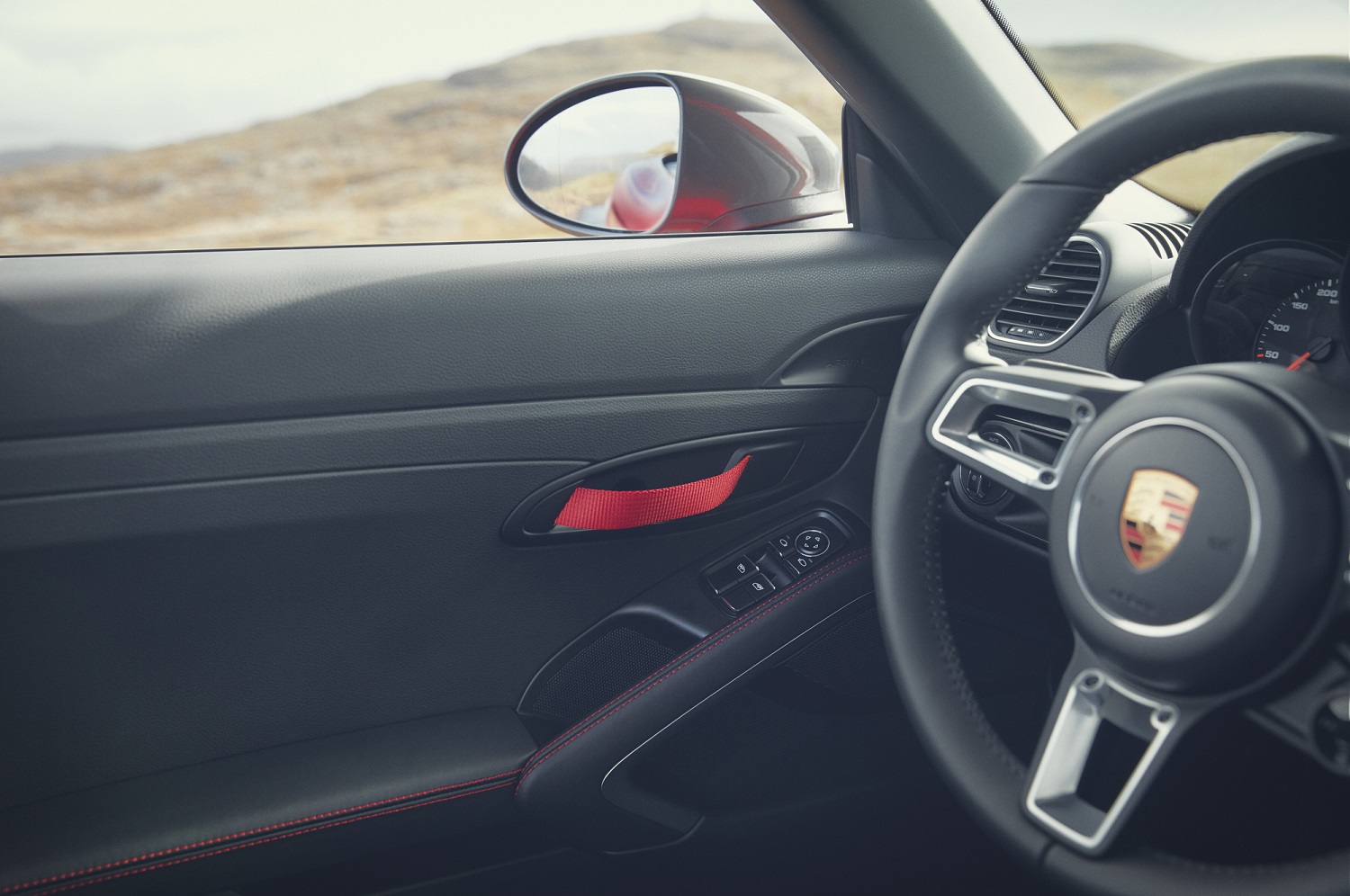Porsche aims to shine on both the road and on the track. While its GT-badged cars are designed to set lap records, the letter T denotes a model developed with driving thrills in mind. The German company added the 718 Cayman and the 718 Boxster to its switchback-friendly catalog earlier in 2019, and it confirmed both models will reach American showrooms.
Both Ts are powered by the same turbocharged, 2.0-liter flat-four engine tuned to deliver 300 horsepower at 6,500 rpm and 280 pound-feet of torque at 2,150 rpm. Mounted directly behind the passenger compartment, the turbo four spins the rear wheels through a six-speed manual transmission, though buyers who would rather not shift their own gears can order a six-speed, dual-clutch automatic transmission at an extra cost. Porsche claims a zero-to-60-mph time of 4.9 seconds with the stick and 4.7 seconds with the automatic regardless of body style.
The T treatment also brings a slightly lower suspension. If you’re into car-spotting, you’ll have better luck telling the Ts apart from other 718s by keeping an eye out for model-specific 20-inch alloy wheels finished in gray, decals on the bottom of both doors, gray mirror caps, and pair of black exhaust tips that stick out from the middle of the rear bumper.
The interior is largely tech-free, at least in its standard configuration, and that’s exactly how designers wanted it. Porsche removed the touchscreen-based infotainment system to save weight and filled the gap it left in the dashboard with a large storage compartment useful for paper maps, or a Sony Walkman, if you still have one laying around. Buyers more concerned with connectivity than pounds can add the infotainment system at no extra cost. The firm also installed fabric door pulls instead of plastic ones, and added a pair of two-way power-adjustable sport seats with 718 emblems embroidered into the headrests.
Both new additions to the 718 range are available to order now across the nation. Pricing starts at $67,750 for the Boxster, and $69,850 for the Cayman, figures that include a mandatory — and rather hefty — $1,350 destination charge. American deliveries will begin in the summer of 2020.
Updated November 5, 2019: Added the latest information about the Ts, including pricing.
